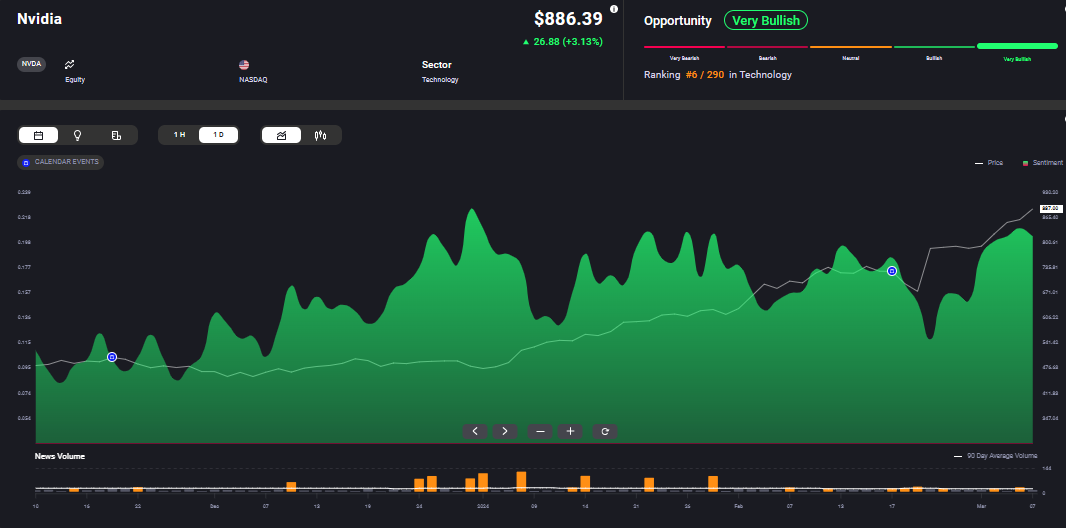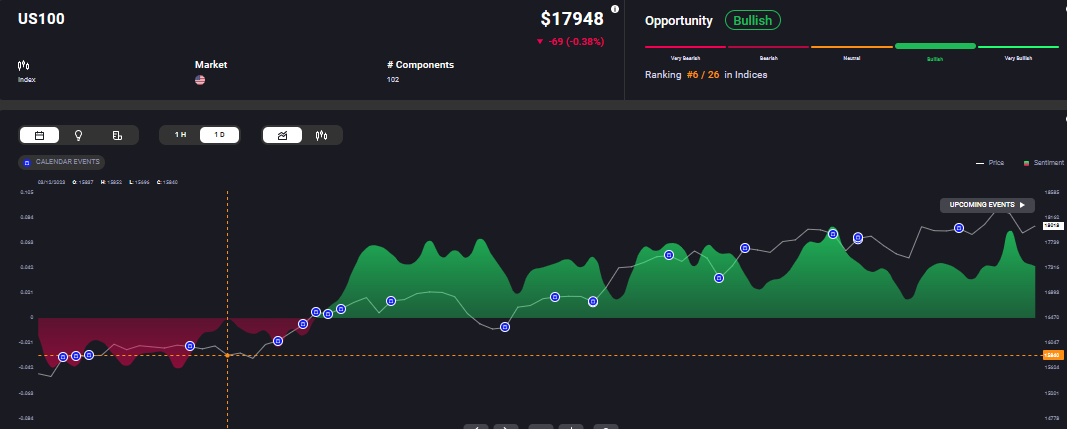Nvidia’s stock exploded last month, making it the third most valuable company, at a market valuation of $2 trillion.
Grabbing a share of over 80% of the AI chip market and generating a whopping 250% year-on-year increase in revenues in Q4 2023 helped the stock climb almost 265% over the 12 months to March 2024. Has this meteoric rise been driven by Nvidia's strong fundamentals, the overall AI boom, or simply market sentiment similar to the dotcom bubble?
The question one must ask is whether the AI boom is a bubble at all. If it resembles the dotcom bubble of the 1990s, we could be looking at some of the most sought-after stocks today going bust in the near future.
What Constitutes a Stock Market Bubble?
A bubble is when stock prices soar rapidly such that share prices massively exceed the fundamental value of the underlying companies. This price bubble is usually driven by speculation and tends to include all stocks from a specific sector or a stock market. The problem is that all bubbles eventually burst.
Stock market bubbles are characterised by 5 stages:
- Displacement: This is when a shift occurs in market sentiment, driven by the launch of a new technology, a product innovation, and even interest rate cuts.
- Boom: Here, the price begins to rise, capturing the interest of the market and drawing in more investors. Demand surges, driving the price higher.
- Euphoria: The erstwhile Fed chairman, Alan Greenspan, termed it “irrational exuberance” during the dotcom bubble. This is when investors throw caution to the wind and go along with the market euphoria for a stock or sector.
- Profit-Taking: When some investors begin to take profits from the unusually high prices, it could be an early warning of an impending bursting of the bubble. As selling pressure rises, prices begin to decline.
- Panic: When the trend reverses and prices drop, investors seek to liquidate their positions. As supply outstrips demand, prices plummet, leading to further panic selling. This ultimately leads to a market crash.
Despite the recent surge in Nvidia’s share price, the market sentiment for the stock is extremely bullish, as is reflected in Acuity’s AssetIQ widget.

Is the current exuberance regarding Nvidia and AI stocks, in general, representative of the euphoria phase of a bubble?
The AI Boom vs the Dotcom Bubble
The massive growth of AI in recent years looks a lot like how the dotcom bubble began in the 1990s, but this similarity might just be superficial. From the late ‘90s to the early 2000s, internet companies saw the sector’s value peaking at $2.95 trillion, driven by tremendous hype-driven investments, before capital began to dry up, taking the market down to $1.195 trillion.
The AI market has been seeing similar growth, with projections that it would reach $305.90 billion in 2024. The sector is predicted to continue on its growth path at a CAGR of 15.83% to reach a value of $738.80 billion by 2030.
Another similarity is the trajectory of the sector. A hype cycle is created by rapid innovations, positive investor sentiment, numerous new entrants, and inflated expectations from the sector.
The difference between the two lies in the expectations of continued growth for AI companies because they are backed by strong fundamentals. This disruptive technology has numerous use cases across industries. We’ve already seen it transform automation, finance, and healthcare. And with AI still in its infancy, there are multiple other applications yet to be discovered.
Of course, we also have the likes of Elon Musk, who warns about an impending doom while simultaneously investing in AI. The reality is that of the thousands of new companies that enter the fray during the hype cycle, only those with intrinsic value will survive to shape the future of the sector. Irrespective of the shape and size of the companies that thrive, indices like the tech-heavy Nasdaq 100 are poised to benefit from AI investments.

Some of the other key differences between the dotcom bubble and the current AI boom include:
Better Established Companies: During the dotcom bubble, we saw a huge surge in tech IPOs, with a large percentage of the companies being relatively new. By the time the bubble peaked in 2000, only 14% of these companies were profitable.
Lower Valuations: Tech stock valuations were through the roof in the late 1990s, driven by speculation and “irrational exuberance.” This time around, valuations are significantly lower than that witnessed during the peak of the dotcom bubble.
Investors Seem More Hesitant: While equity fund flows rose 76% in 2000, compared to 1999, such fund flows have been in the negative during 2022 and 2023. It is heartening to see that investors are taking their time to conduct their own analysis and make informed investments.
For now, only about 1% of Nvidia’s publicly available stock is being sold short. But this does not mean there won't be market corrections going forward. At the same time, AI’s long-term potential, wide-ranging use cases across industries, and transformative capabilities will continue to bolster the sector.
Market Commentary